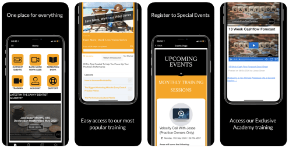Buyer indecision is a funny thing.
When we go into a shop to look around, we don’t want to be pushed into a buying anything. Often we’re not even sure we need anything.
We’re browsing while we kill time. There’s nothing we want so we’re unlikely to buy.
At least, not until we see that fancy new phone and remember that the one we currently have has a small crack in the screen.
The new phone looks pretty nifty. All elegant lines, slim and stylish.
Suddenly the small problems with our current phone seem to increase in importance. We have a problem that needs solving.
We need a new phone.
But even once we decide we need a new phone, we’re unlikely to jump in and buy one immediately. That’s not how things work.
In fact, buying is like dating. Really. Think about it.
If a stranger approaches you in a coffee shop and asks you for a date, it’s off-putting and uncomfortable. You don’t even know them.
But if a stranger says something like, “Do you think they’ve gone to pick the beans? They’re taking a while, aren’t they?” you might laugh and agree.
Then maybe you’d chat for a few minutes.
And if they then say, “I really enjoyed talking to you, maybe I can buy you a coffee in a place where the service is a better. Could I call you?” You might end up having a coffee, and maybe going on a date after that.
The point is that there’s a whole process behind going on a date. You can’t just jump in cold and ask people out.
And it’s the same when it comes to buyer indecision. You can’t jump straight to a sale because we all go through a natural decision-making cycle.
It is a journey in the mind and we have to travel through each stage before making a decision. There are actually five stages to making a decision to buy.
Let’s take a closer look at this. Not only will this knowledge make you a better seller, it will also make you a more intelligent buyer.
You Have The Power
You might think the customer has the power when it comes to purchasing, but you have a great deal of power too. You just need to use it.
You can help your patients decide by respecting the decision-making cycle.
Communicate with them based on where they are up to in the decision-making process. You’ll capitalise on the rapport you’ve built, and you’ll face less resistance.
You have a real solution to your patient’s problem. You just need to bridge the gap in their mind between the problem and the solution.
Do that, and you’ll make it far easier for them to make a decision.
_______________________________________
Want more great marketing strategies? Join Nauv Kashyap and I for our Marketing Masterclass – How to Be Fully Booked.
We’re running a one-day masterclass in both Melbourne and Sydney, and we’d love you to join us. The events are filling up fast, so grab your tickets now.




